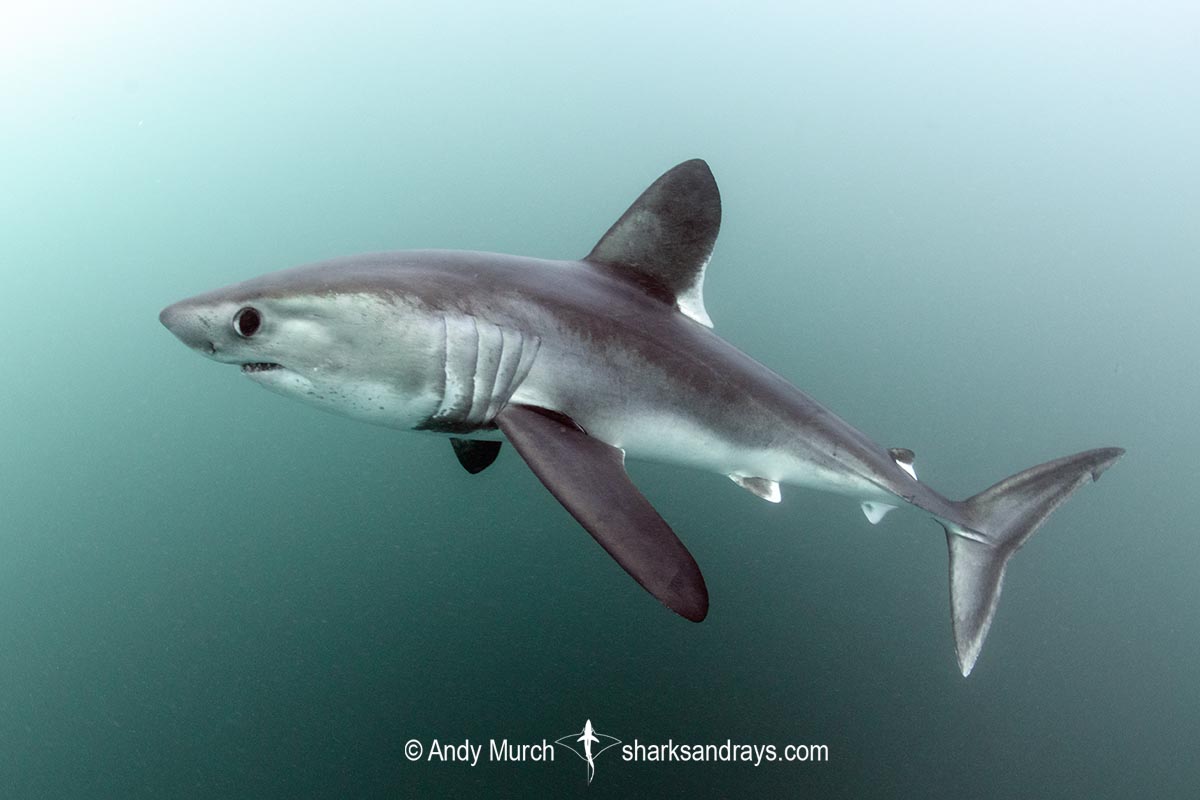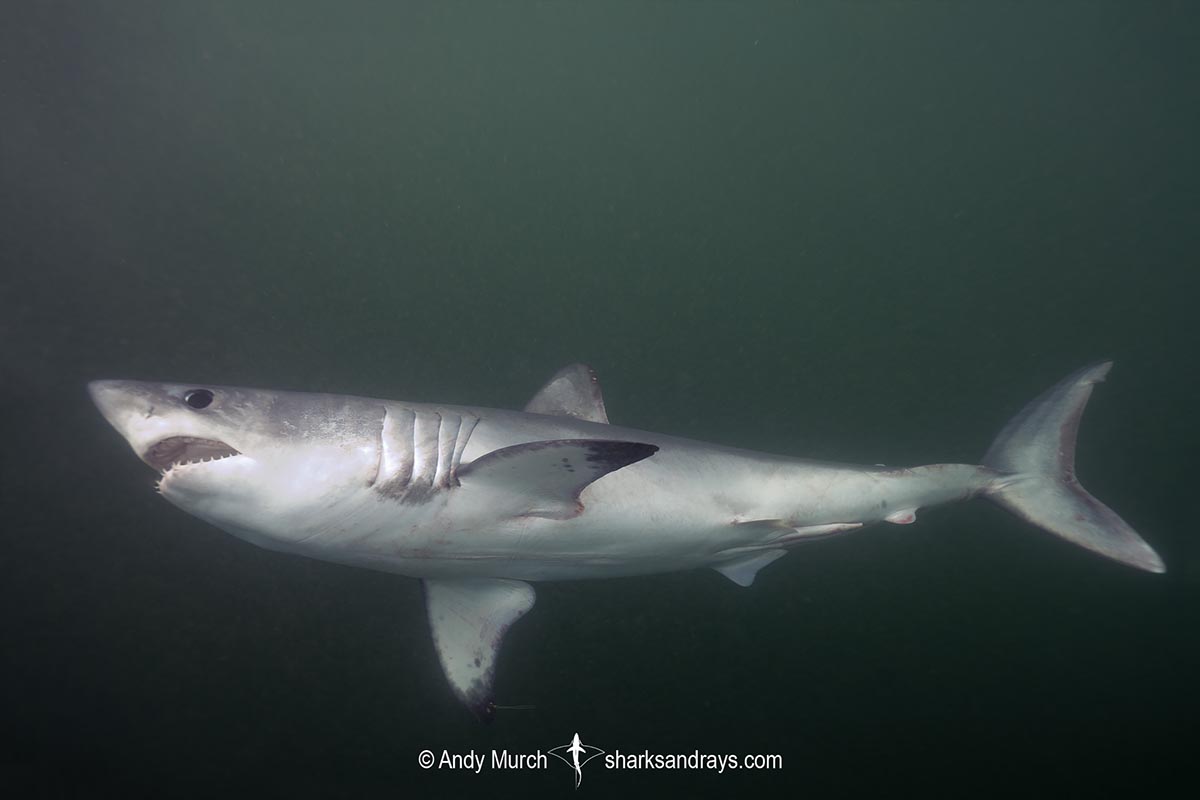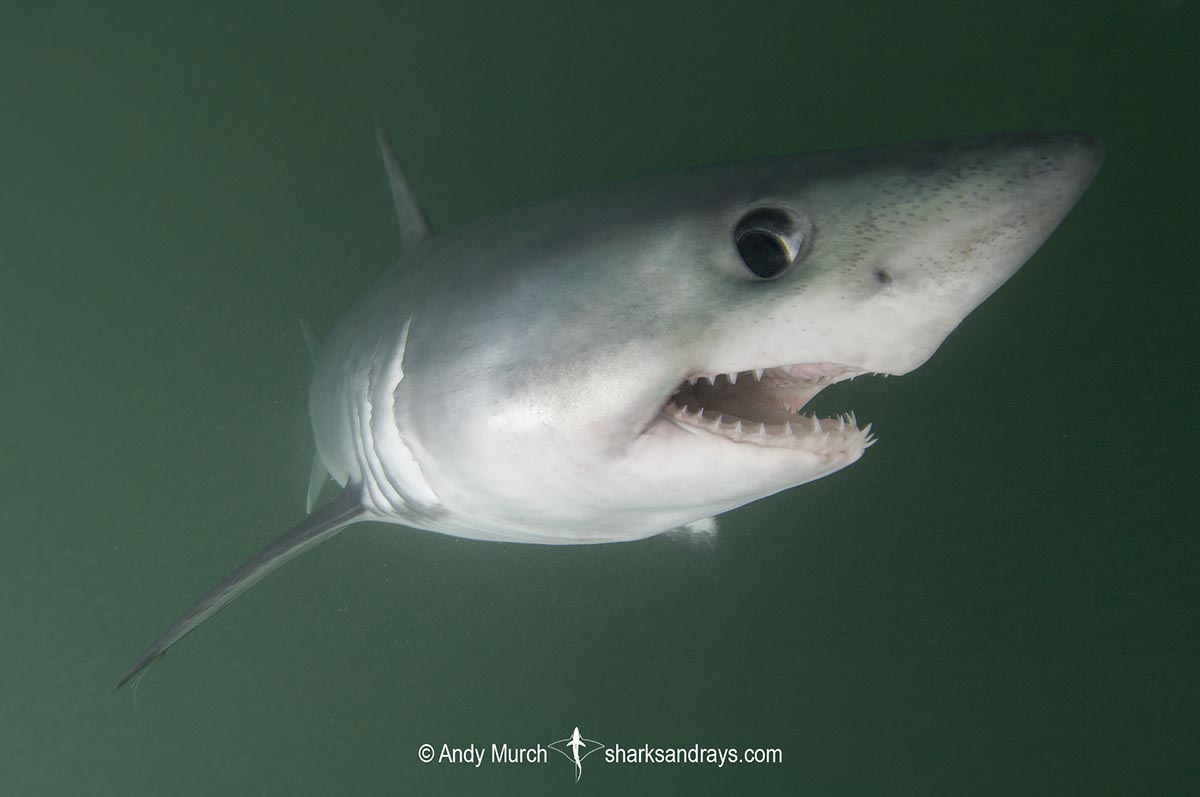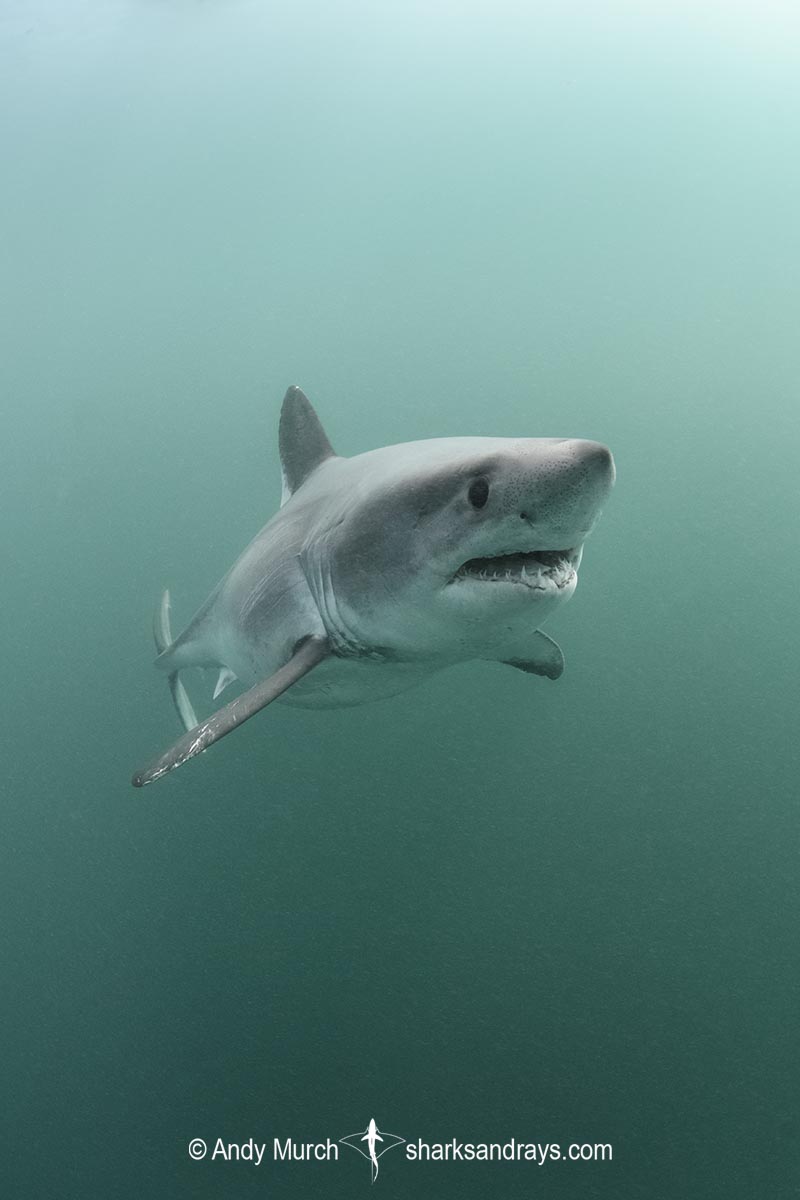Common names
Porbeagle Shark.
Binomial
Lamna nasus.
Synonyms
Lamna cornubica, Lamna pennanti, Lamna philippii, Lamna punctata, Lamna whitleyi, Lanna nasus, Oxyrhina daekayi, Selanonius walkeri, Squalus cornubicus, Squalus cornubiensis, Squalus monensis, Squalus nasus, Squalus pennanti, Squalus selanonus.
Identification
A powerfully built shark with a pointed, conical snout. First dorsal fin origin over or anterior to pectoral fin insertion. First dorsal apex somewhat rounded. Second dorsal fin about 1/4 height of first dorsal. Second dorsal origin opposite anal fin origin. Prominent lateral keels on caudal peduncle support a large, powerful falcate, caudal fin. Shorter secondary caudal keel positioned below main keel. Upper caudal lobe slightly longer than lower.
Dorsal coloration metallic grey, bluish-brown, or almost black. Ventral surface white without any obvious spots or blotches. White free rear tip on first dorsal fin.
Size
Maximum length at least 280cm. Anecdotal records of larger animals (up to 360cm) are probably exaggerations. Size at birth 60-80cm.

Conservation Status
VULNERABLE
The porbeagle shark has a late age at maturity and small litters. It is targeted and caught incidentally in longline, purse seine, gillnet fisheries, and rod and reel, and is frequently retained for its meat and fins.
The northern subpopulation has suffered greater declines because fishing pressure is more intense and northern porbeagles have a shorter life span; approx 26yrs. It is estimated to have undergone declines of 50–79% in the last 58 years. The southern population lives to 60 years and has decline by approximately 20% in the last 115 years.

Habitat
Cold to warm-temperate oceanic and inshore environments. Surface to 1809m but usually 0-200m.
Distribution
Two isolated subpopulations exist. The northern population is confined to temperate and cold temperate latitudes of the North Atlantic. The southern population is found throughout the temperate and cold temperate latitudes of the Southern Ocean.
Reproduction
An aplacental viviparous species with oophagous (egg eating) embryos. 1-6 embryos per litter, but usually 3-4.
Diet
Porbeagle sharks in the North Atlantic consume a wide range of fishes, squids, and crustaceans, including butterfish, menhaden, cods, capelins, mackerel, herring, pilchards, hake, cusk, flounders, alewifes, loligo squids, and crabs.
Behavior
Migratory. In the North Atlantic, porbeagles move inshore and northward during the summer.
Reaction to divers
Extremely shy. Difficult to approach on scuba or snorkel unless fixated on bait.
Diving logistics
The porbeagle is a difficult shark to swim with, but there is a hotspot for this species off the coast of Brittany. Porbeagles are not seen on reef dives but they can be encountered in open water when chum is utilized. Big Fish Expeditions runs dedicated porbeagle diving trips each summer in northern France.
Blue shark chumming trips off the south/west coast of the UK, occasionally attract porbeagle sharks but encounters in the UK are rare.
I have also photographed porbeagles in the Bay of Fundy in Canada while accompanying researchers from the University of New Brunswick. They also show up off the coast of Newfoundland but at present there are no dive operators offering trips in North America.
Similar species
Shortfin Mako Shark Distinguished by more slender body, more acutely pointed snout, and lack of second caudal keel.
Great White Shark Distinguished by pointed first dorsal fin, lack of secondary caudal keel, and broadly triangular teeth with serrated edges.


















